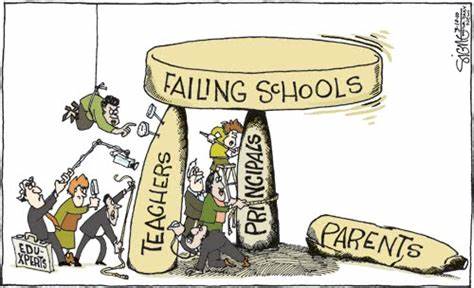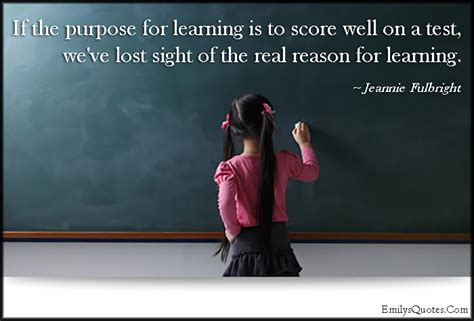
The United States was once ranked at or near the top for its effective public education system. Now that system is in a slide that sees its standing deteriorating more and more with each passing decade. Our children are not reaping the benefit of an education that will prepare them for adulthood and a satisfying career. How did this happen? What can be done to reverse the trend?
The answers to these questions are varied and highly contested on certain points. Politics have become increasingly involved. The issues are complex. Before we take a hard look to see if any reliable answers are being offered, some background may be helpful and relevant.
The Rise
The first European colonists arrived in America in the 1600s. In the first 200 years, education was offered selectively to children based on social status, gender, race and region. It was privately provided by the likes of churches, charities, boarding schools for the well-to-do, local civic groups and even traveling schoolmasters. Although the founding fathers made it clear they felt the nation’s citizens should be educated, even publicly, the notion didn’t generally catch on in those early years. In the mid-1800’s, the states were getting on board with the concepts of public education and that it should be free (supported by specified taxes). It became widely accepted that teachers should be trained and students should be required to be in school. By 1870, approximately 78% of children aged 5 to 14 were enrolled in public schools.
High school attendance didn’t become common until the 20th century. The numbers grew slowly and steadily to the point where the majority of students earned a high school diploma.
Prior to that, the training of elementary-level teachers became standardized in what were called normal schools. Eventually, teachers were trained for K-12 at teachers colleges. The standards were high. Good teachers were being produced. Education was gaining ground in being valued and respected. Whereas teachers had been mostly male, it became more and more common to see women taking the role.
Access to an education was not even along the way. People of color, females, immigrants and those from poor families faced challenges that were often daunting. It can be said, however, there were usually many progressive citizens in lots of communities who were promoting more inclusive agendas.
In spite of the persistent social problems, American students generally were benefitting by the 1950s from a well-organized, well-funded school system. The states were increasing their support while local funding diminished, taking pressure off the local citizens and organizations. There was a steady increase in reading and mathematics performance. These gains had become the norm.
The Decline
When the National Assessment of Educational Progress began documenting performance in 1971, the nation’s 17 year-olds were at the same reading level as they were in 2016. They performed better in math, but progress there leveled off in 1990. This lack of development is true for white students as well as other races and ethnicities. For Americans born since the group of 1947-1957, the United States’ subsequent generations rank last in mathematics and second to last in literacy.
Getting a handle on this failing trend had not been easy as we passed into the 21st century. Then we hit the pandemic. With schools having to teach remotely and students being more on their own to keep up their studies did not yield good results. Recent statistics show that 9 year-olds scored on the average 5 points lower in reading and 7 points lower in mathematics compared to their 2020 assessments. This is the largest average score decline in reading since 1990 and the first ever such decline in math. The Brookings Institute has described the effect of the pandemic on students as “a wrecking ball for U.S. public education, bringing months of school closures, frantic moves to remote instruction, and trauma and isolation.”
More Reasons Why
Much has been written about the fall of the American education system’s fall from grace. There’s considerable disagreement about what has brought us to this, but there are many points of agreement as well. I’m not going to bullet point these and discuss each in a short article, but here are some reasons that seem consistent with logic and common sense.
There are deficits in needed funding for schools. Discontinued programs and the need for teachers to pay for class activities out of their own pockets are obvious proof of ongoing shortages. Decline in school safety is a distraction that is significant. Another distraction is technology and it can make it easier to cheat rather than learn. Standardized testing can lead students to study for test questions instead of deeply learning a subject, internalizing the data. Teacher salaries have decreased in some cases and failed to maintain a level of sustainability in many others, meaning talented teachers are lost and less competent teachers are hired in greater numbers. Overcrowded schools have resulted from numerous school closures and bigger classes translate to less individual attention from teachers. Mental health challenges are on the rise among students and the ratio of counselors to students is inadequate. Parental involvement in their children’s education is lacking, making their children less likely to succeed. Teaching methods are inadequate and teacher innovation has been suppressed by standardized curriculums and testing.
Leading to Solutions
There are other theories about why our system is failing. There are also solutions being proposed. Some are contentious and controversial. In Part Two, I’ll delve into these. It’s a huge topic, but I’ll do my best to do it justice.

Leave a Reply